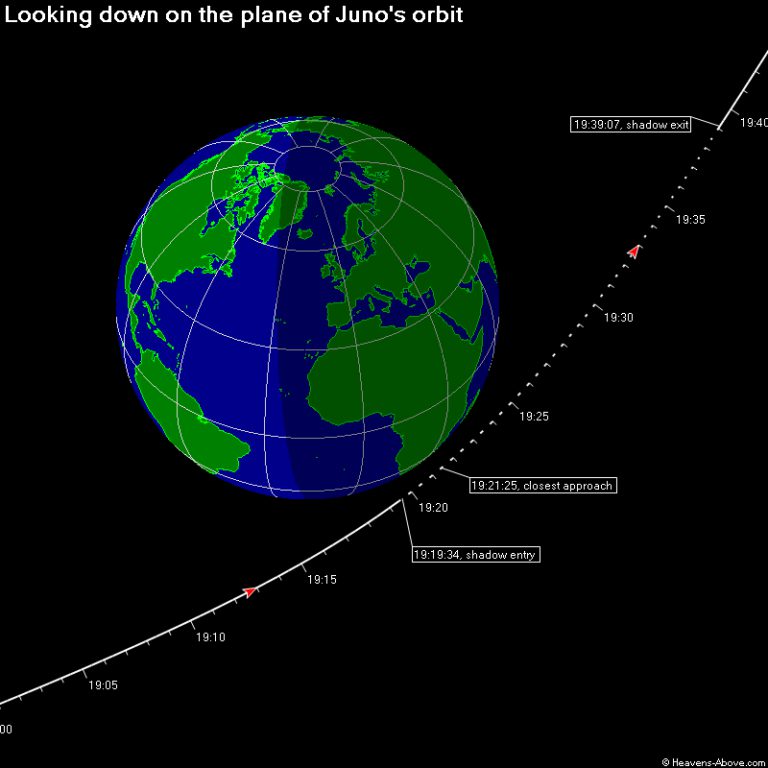Casey Dreier • Oct 09, 2013
Juno Flies By Earth Today
U.S. government shut down? Orbital mechanics don't care.
NASA's Juno spacecraft swings by Earth today in a maneuver designed to give it the necessary trajectory and velocity to reach Jupiter in 2016. Juno's closest approach will occur at 12:21 pm PDT / 3:21 pm EDT / 19:21 UTC today, passing a mere 347 miles (559 kilometers) from the Earth's surface. Make sure to wave (or even say "Hi" via Ham radio).
So will you be able to see it? The website HeavensAbove.com provides some information for you (see the image below) and more detailed ways to look. From the image below, you can see that it will pass very close to South Africa and Southwest Asia, but it won't be visible from the western hemisphere.
Juno couldn't fly directly to Jupiter – current rockets aren't powerful enough – so it's using Earth for a gravity assist. Here's the full path Juno will take from launch to Jupiter Orbit Insertion:
Planetary Society CEO and noted Science Guy Bill Nye just filmed a video about today's flyby:
Other Ways to Follow the Close-Encounter
NASA's Eyes on the Solar System
You can also follow the close approach via simulation in NASA's very cool Eyes on the Solar System program, which is still up and running, despite the shutdown. They've created a special Juno module to help celebrate today's close-encounter. I'd recommend taking some time to explore the spacecraft in this program – you'll find some really interesting information about the exciting science that will happen at Jupiter.
Slooh Live Webcast
Thought it doesn't seem to cover the closest approach, there will be live-feed from a variety of telescopes trying to catch a glimpse of Juno as it barrels away from Earth.
Raw Images from the Spacecraft
The JunoCam imaging system will be taking pictures of the Earth and Moon today. Malin Space Science Systems is very awesomely posting raw images as they are available today, so look for those. Beware, though, because the camera is bolted on to the spacecraft and Juno is spin-stabilized, the camera uses a push-frame design to acquire strips of data as the spacecraft rotates. That means raw images will look a little weird, but luckily there is a fantastic space image processing community out there who has already published some pictures:

Don't forget, the closest approach is 12:21 pm PDT / 19:21 UTC. If nothing else, just pause for a minute and consider that this spacecraft, created and launched by humans two years ago, gets one more brief glimpse of home before pushing on towards Jupiter, never to return.
We'll post more updates as they happen today.
Support our core enterprises
Your support powers our mission to explore worlds, find life, and defend Earth. You make all the difference when you make a gift. Give today!
Donate

 Explore Worlds
Explore Worlds Find Life
Find Life Defend Earth
Defend Earth


